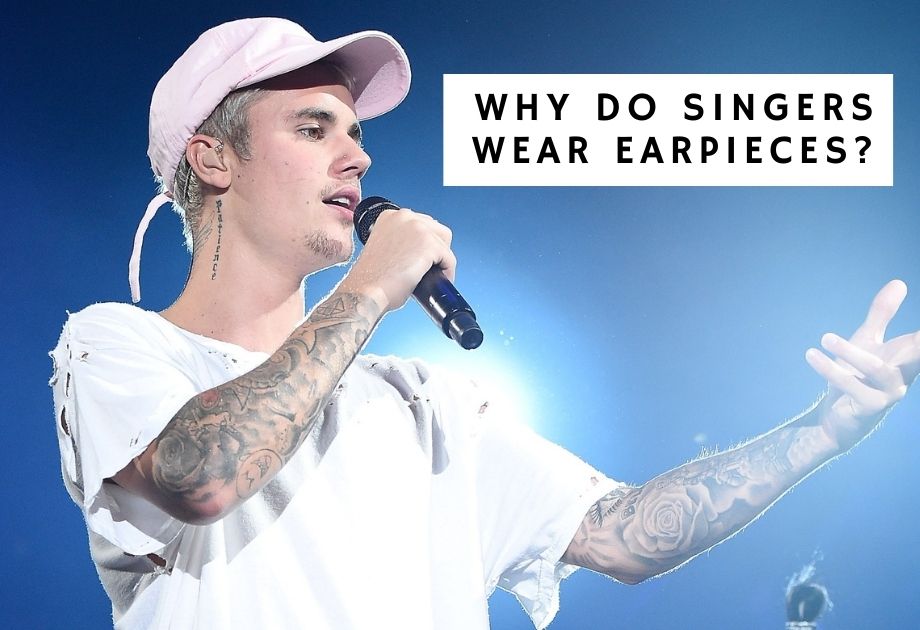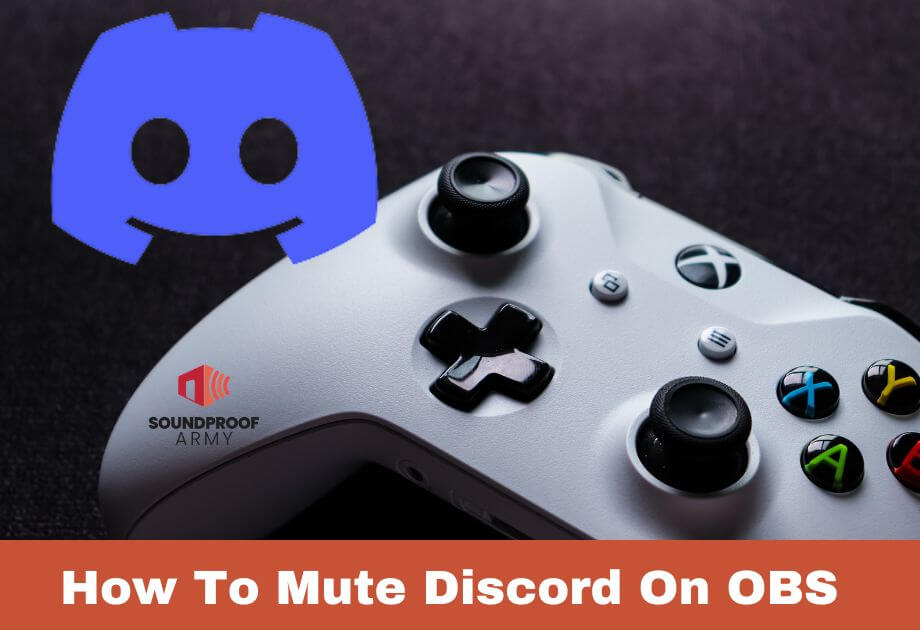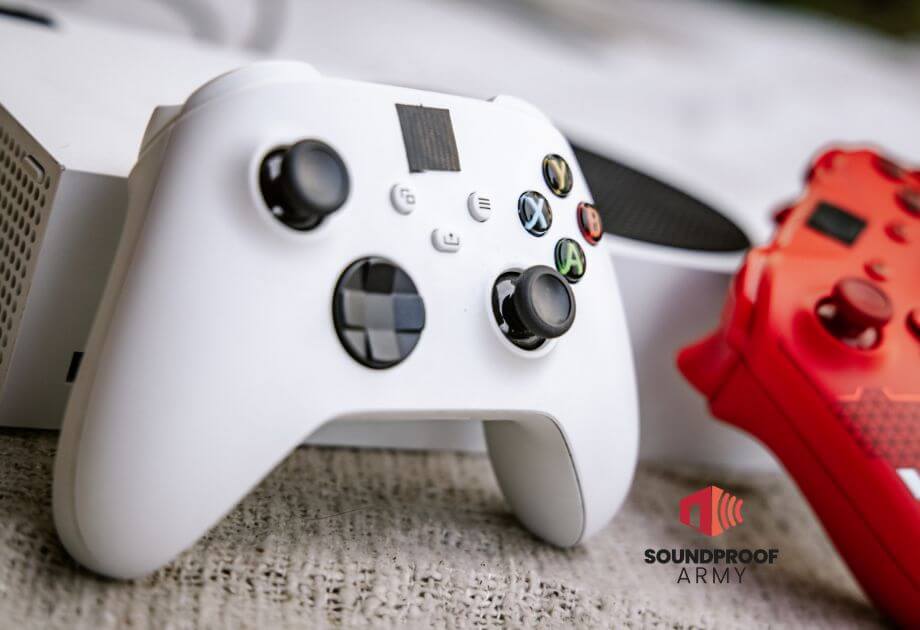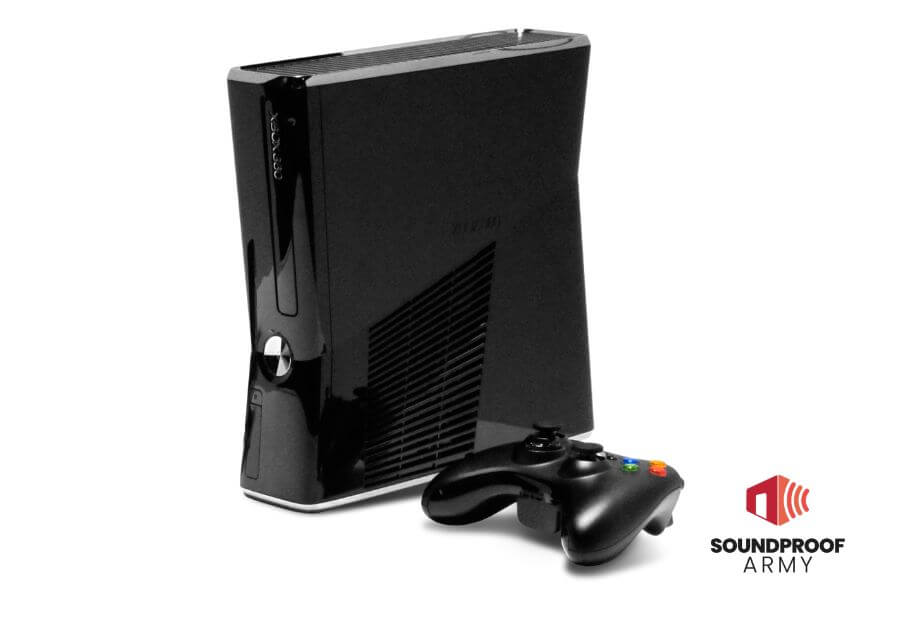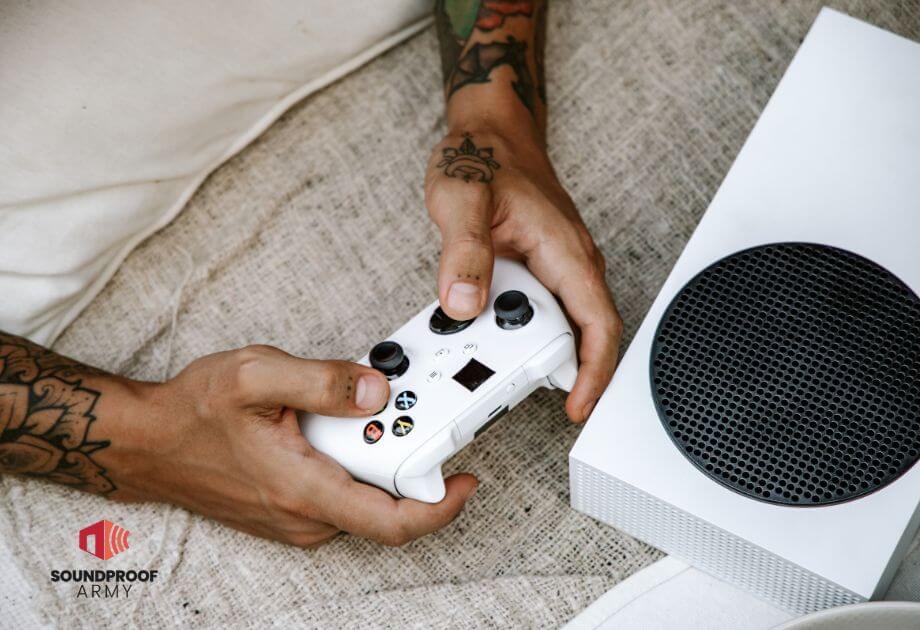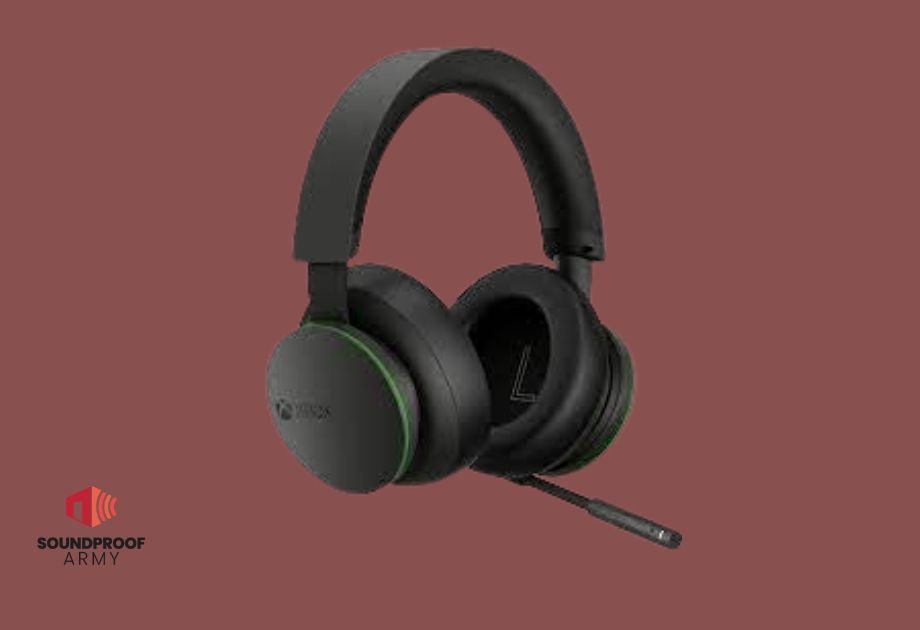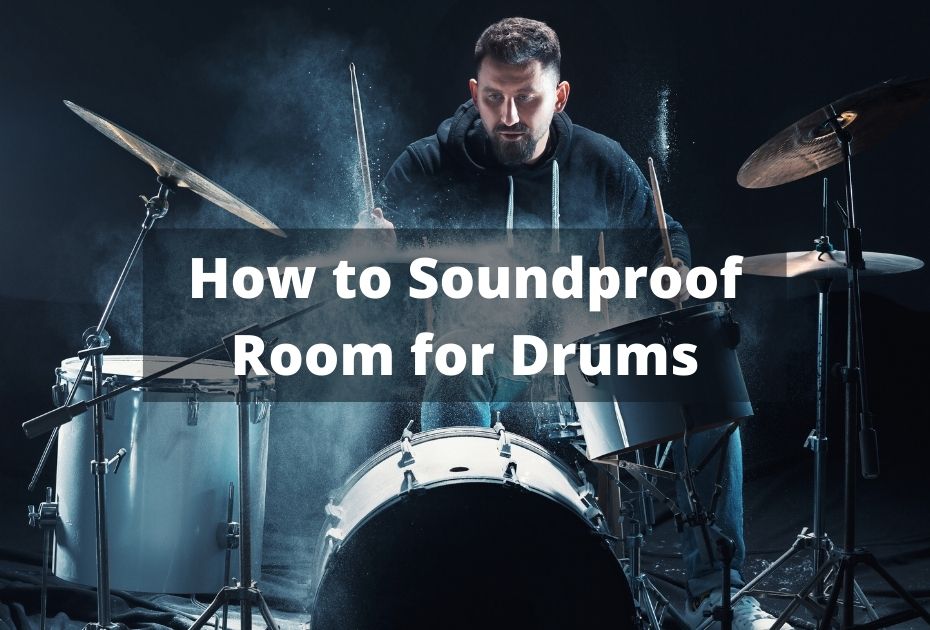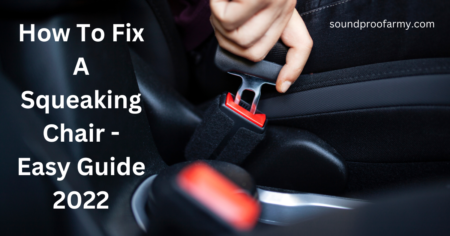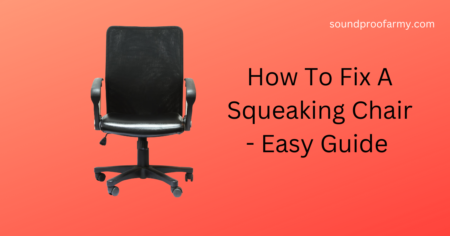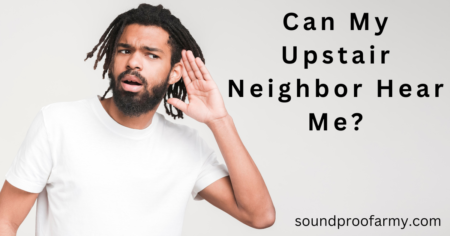What is the most important part of stage performance? Your voice, right? It would help if you had your voice clear and strong for your audience. But Why Do Singers Wear Earpieces?
Singers wear earpieces because they use them as a way to monitor their voices while singing. It allows them to sing more powerfully and with less strain.
Table of Contents
Do you know what an earpiece is?
An earpiece is what singers put in their ears just before going on stage so that they can hear themselves sing better while still being able to listen for cues from the conductor or other performers.
It lets the singer focus on his/her singing without having any outside noises interrupt.
Earpieces are important because they help singers maintain a pitch and volume level without strain or frustration.
An earpiece is also less distracting to the performer than wearing headphones, which can come loose from their ears easily.
The problem with traditional wedges is that it’s difficult for performers on stage to hear themselves over other speakers while still hearing cues from the conductor or fellow musicians.”
However, In-Ear Monitors (IEMS) is a popular choice for singers, making setup easier.
Rather than setting up many speakers that take up performance space, IEMs let singers hear their mix.
Now that we’ve answered your question on why singers wear earpieces let’s explore the finer details below.
How Singers Earpieces Work
Earpieces have been around for decades.
But they were traditionally used by the military and police force to communicate with their teams during combat situations,
While in a concert setting, earpieces can be an artist’s best friend on stage.
Singing requires excellent hearing skills that we often take for granted in day-to-day life, but music is too loud on stage, so it isn’t easy to hear without earpieces.
Have you ever seen an artist with something that looks like a radio on their waist and they have earplugs in their ears? That is an earpiece.
The heart of an earpiece lies in its ear tip, which can be either silicone or foam to create maximum comfort for performers on stage.
A single wire goes down from the eardrum into the neck, where it connects with a wireless receiver/transmitter belt pack around the waist.
So they can hear themselves while also hearing those frequencies most often lost during live performances.
Why Do Singers Wear Earpieces?
Hearing Protection
If you’ve been into a live performance show, Then you know how the noise can be too loud. It can even be too loud when you go back to your seat.
Imagine you are the center of it all, feeling trapped in a place with only noise for an hour or more. This noise can lead to hearing loss.
Hearing protection by using an earpiece is one of the ways that are used to protect your ears from this type of trauma.
The hearing protection could be done in two different ways: either with a custom-made and fitted earplug or through what’s called In-Ear Monitors (IEM).
When singers are on stage and performing, they can get noise from different places. To protect their ears, they wear earpieces.
Because this reduces outside interference when playing an instrument or singing by reducing its volume level by 20-30 dB at least.
Listening to anything louder than 85 decibels can hurt your ears. In-ears protect your ears from the sound of drums and other loud instruments.
That way, you can turn down the sound while still being able to hear it.
If you hear a loud noise, it can make you experience some ringing in your ears. It is not harmful and will go away after 1 or 2 days.
However, when you are constantly exposed to noise, it will damage your hearing. Singers know this. That is why they wear earplugs before they go on stage.
Superior Sound Quality
Besides just being used for noise protection, earpieces also help to improve sound quality.
In a concert, many things make the show nice. Sounds are coming from instruments and people singing.
For example, Speakers make the music louder for the audience.
The sound monitors help in producing clear music without “bass” and “treble.”
They come with a selection of special filters that can alter the frequency to make it more pleasant for your ears while still being professional sounding.
While all these were working at the same time to make it a good performance;
When all of these factors are at work together, a professional singer’s performance can be spoiled by feedback and phase problems.
As the earpiece helps to counteract the lack of clarity in sound quality,
Because In-ears fit tightly in the ear, the seal blocks out outside noise. This means that you can hear more detail but with less volume.
Move Around the Stage
Singing with an earpiece helps you move around the stage. The monitors on the stage make it tough for singers to move.
The stage monitors are taking up too much space on the stage.
This makes it hard for singers to go anywhere because they will bump into them.
The wires of stage monitors could also knock over the singer and hurt them.
As singers need to take a specific position so they can hear the sound in their ears well,
This is why it’s important to use earpieces as a backup system for singers.
As they can move around without having to worry about bumping into things or tripping on wire cords,
It also helps the singer to hear what is being said by others on stage to coordinate with them and make any necessary changes when performing.
Mix Customization
However, in-ear monitors (IEMs) have made them popular choices for monitoring vocals, as singers can hear a mix that is fully customized to their liking.
When a singer performs on stage, they will rely upon certain arrangements to achieve an excellent performance.
So they need to know that their pitch should sound correct during the entire song for any adjustments made afterward to have been successful and necessary.
In-ear monitors allow performers to listen to the music as they want rather than everyone else hearing it too.
It also means that they can get up their volume without bothering other participants on stage if they want.
Help in Metronome Use
Earpieces help singers sing their best, and avoid pitfalls and mistakes that could ruin the whole performance.
Metronome use helps singers keep their tempo steady and avoid the embarrassment that comes with this.
A metronome is an essential tool for singers. With the click sound of time, they can stay in tempo and sing professionally- without being out of tune.
A metronome is a device used to steady the performance of musicians on stage or when practicing.
Each musician has a tempo that they need to perform well, which can be achieved with assistance from the metronome.
As the singer sings, they hear a click sound that alerts them to time their next note. The audience hears nothing as it is only for the performer’s ears, thanks to an earpiece inside it.
The sound of your voice is the most important thing to many people.
The earpiece can help you convey that message, especially for singers who need backing tracks during their performance.
If performers are not careful with their time, the tracks will sound off.
Provides Sound Consistency
Using earpieces lets singers hear their voices and the mix of instruments they are performing, ensuring a more consistent sound throughout the performance.
As the size of the room affects how a band or singer performs,
Since different venues produce various sounds, singers must be prepared to face any sound for their performance to sound great.
A singer on tour will often be faced with performing in various venues, which might confuse them and affect their performance.
For instance, the location of drummers or guitarists on stage may make it difficult for singers to hear what they are producing as well.
Often, performers will wear earpieces so that they can hear the other instruments with clarity.
This is especially important for vocalists who are in front and need to hear any cues or lyrics from a stage back.
On Why Do Singers Wear Earpieces?
Earpieces are an important tool for those who want to monitor their playlist while they work.
Depending on your needs, you will need to choose between a generic type or a custom-sized one.
Generic ones can be found at low prices and will do the job just fine.
However, if you plan on wearing them all day long to get the most out of your music listening experience,
It may not feel as comfortable when worn for prolonged periods.
These types tend to slip off easily due to being too big or small, depending on how well they fit your ears.
Customized earpieces are designed specifically with different sizes in mind.
Anyone can wear Customized earpieces comfortably without worries about slipping off during the process.
Why Do Singers Take Out Their Earpieces During A Performance?
There are three primary reasons why a singer would take out their in-ear monitors during a performance:
Poor monitor mix:
If the sound engineer is not mixing your signal properly, you will hear everything in front of you.
This includes the audience and other musicians on stage or even off-stage audio, such as monitors for video cameras.
The result may often lead to a performer who would want their earpieces out during a performance because they are being flooded with sounds coming from everywhere.
They also don’t need an earpiece when performing if there’s no background noise anyway.
Faulty monitors:
One of the most frustrating things for performers is when their in-ear monitors break, and they’re unable to hear either the monitor mix or live sound.
Often, this causes them to remove their in-ears so that they can play on stage by “feel.”
To hear the crowd:
It’s not always easy to hear what the crowd is singing when wearing in-ear monitors, and many artists find that this can be a tricky situation.
Some will wear one earpiece to listen for feedback while also listening carefully to their mix onstage.
When Did Singers Start Wearing Earpieces?
In the 1970s, Chris Lindop developed a device for in-ear monitors to help musicians hear their performance while they are on stage.
This technology ultimately evolved into a set of headphones that helps rock stars stay in tune while still feeling like they are with the audience.
However, in-ear monitors did not come into use as often until the 1990s. Van Halen was the first band to use them, and they were called “modern-day” at that time.

